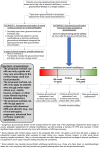European Society of Endocrinology and Endocrine Society Joint Clinical Guideline: Diagnosis and Therapy of Glucocorticoid-induced Adrenal Insufficiency
- PMID: 38724043
- PMCID: PMC11180513
- DOI: 10.1210/clinem/dgae250
European Society of Endocrinology and Endocrine Society Joint Clinical Guideline: Diagnosis and Therapy of Glucocorticoid-induced Adrenal Insufficiency
Abstract
Glucocorticoids are widely prescribed as anti-inflammatory and immunosuppressive agents. This results in at least 1% of the population using chronic glucocorticoid therapy, being at risk for glucocorticoid-induced adrenal insufficiency. This risk is dependent on the dose, duration and potency of the glucocorticoid, route of administration, and individual susceptibility. Once glucocorticoid-induced adrenal insufficiency develops or is suspected, it necessitates careful education and management of affected patients. Tapering glucocorticoids can be challenging when symptoms of glucocorticoid withdrawal develop, which overlap with those of adrenal insufficiency. In general, tapering of glucocorticoids can be more rapidly within a supraphysiological range, followed by a slower taper when on physiological glucocorticoid dosing. The degree and persistence of HPA axis suppression after cessation of glucocorticoid therapy are dependent on overall exposure and recovery of adrenal function varies greatly amongst individuals. This first European Society of Endocrinology/Endocrine Society joint clinical practice guideline provides guidance on this clinically relevant condition to aid clinicians involved in the care of patients on chronic glucocorticoid therapy.
Keywords: adrenal crisis; adrenal insufficiency; glucocorticoid withdrawal; glucocorticoids; steroids; substitution therapy.
This article has been co-published with permission in The Journal of Clinical Endocrinology & Metabolism and European Journal of Endocrinology. © The Author(s) 2024. Published by Oxford University Press on behalf of the Endocrine Society.
Figures



References
-
- Fardet L, Petersen I, Nazareth I. Prevalence of long-term oral glucocorticoid prescriptions in the UK over the past 20 years. Rheumatology (Oxford). 2011;50(11):1982‐1990. - PubMed
-
- Overman RA, Yeh JY, Deal CL. Prevalence of oral glucocorticoid usage in the United States: a general population perspective. Arthritis Care Res (Hoboken). 2013;65(2):294‐298. - PubMed
-
- van Staa TP, Leufkens HG, Abenhaim L, Begaud B, Zhang B, Cooper C. Use of oral corticosteroids in the United Kingdom. QJM. 2000;93(2):105‐111. - PubMed
-
- Baker EH. Is there a safe and effective way to wean patients off long-term glucocorticoids? Br J Clin Pharmacol. 2021;87(1):12‐22. - PubMed
Publication types
MeSH terms
Substances
Grants and funding
LinkOut - more resources
Full Text Sources
Medical

